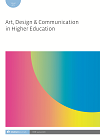
Full text loading...

This article focuses on feedback, a one-on-one design teaching practice that teachers approach intuitively and has been crucial within the design studio. However, although healthy student–teacher relationships are fundamental for feedback, research on understanding them deeply or developing them is still incipient. This research contributes with a tool for teachers to strengthen student–teacher relationships. The tool highlights that teachers must practise empathy as an iterative process. The approach was through a three-phase research methodology. First, a literature review on empathy and feedback aimed at understanding their relationship. In-depth interviews with students correspond to the second phase, exploring the role of student–teacher relationships in motivation and performance. Finally, in the third phase, a five-skill/stage cycle was put into practice during feedback within the design studio: the iterative empathy model. Results show that student–teacher relationships strengthen by practising five skills iteratively through a five-stage process: openness, perception, comprehension, communication and action. Consequently, students’ motivation and performance also improve.

Article metrics loading...

Full text loading...
References


Data & Media loading...

Publication Date:
https://doi.org/10.1386/adch_00078_1 Published content will be available immediately after check-out or when it is released in case of a pre-order. Please make sure to be logged in to see all available purchase options.